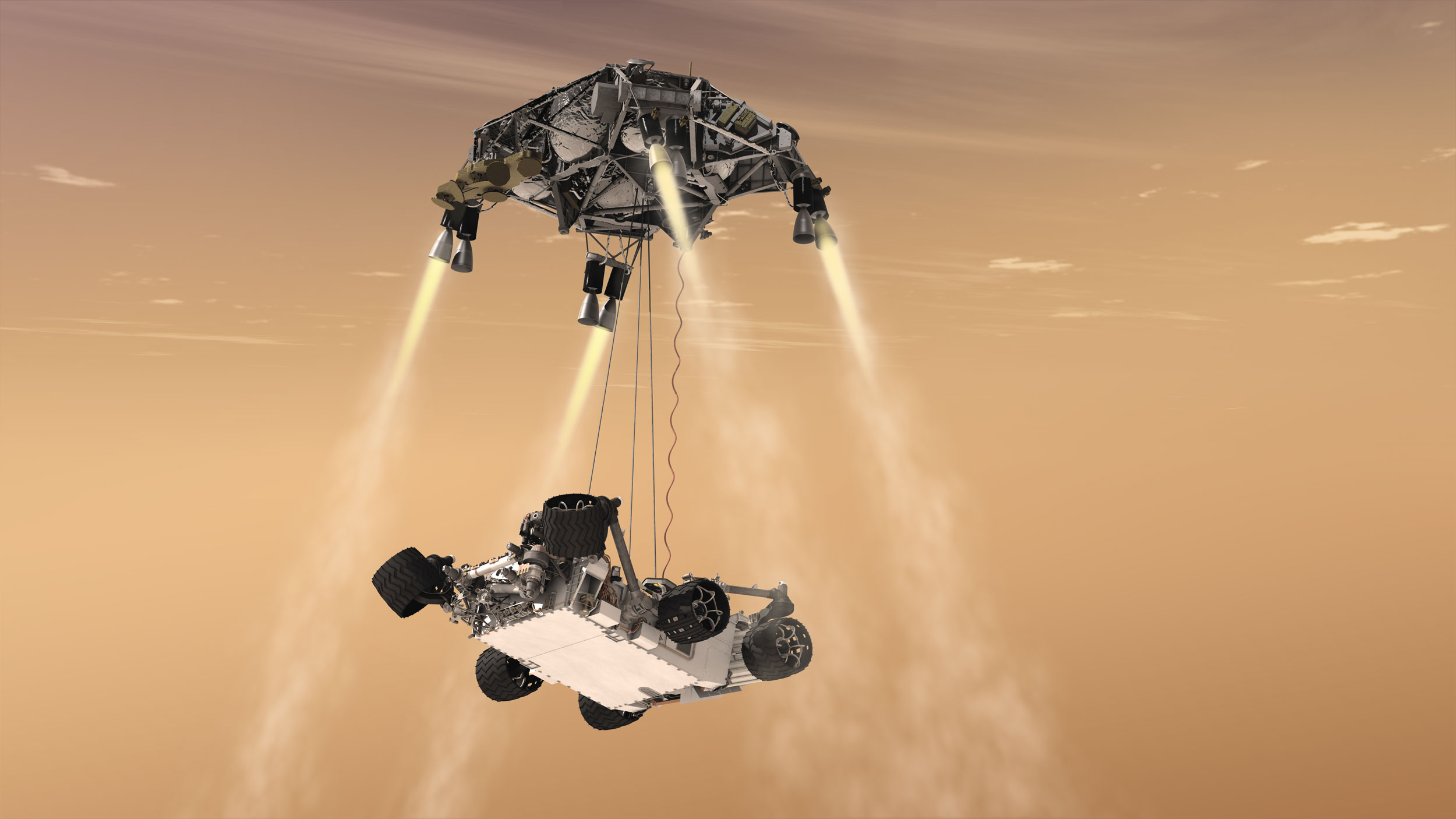In case you were wondering what a sky crane looked like.
This is one of the many reasons why aerospace people roll their eyes when Mars One CEO Bas Lansdorp starts talking about being able to carry out the project just using existing technology.
There’s no comfort in the statistics for missions to Mars. To date over 60% of the missions have failed. The scientists and engineers of these undertakings use phrases like “Six Minutes of Terror,” and “The Great Galactic Ghoul” to illustrate their experiences, evidence of the anxiety that’s evoked by sending a robotic spacecraft to Mars — even among those who have devoted their careers to the task. But mention sending a human mission to land on the Red Planet, with payloads several factors larger than an unmanned spacecraft and the trepidation among that same group grows even larger. Why?If you're interested in aerospace, I'd recommend reading the entire article. It walks through all of the not-very-good options in detail.
Nobody knows how to do it.
Surprised? Most people are, says Rob Manning the Chief Engineer for the Mars Exploration Directorate and presently the only person who has led teams to land three robotic spacecraft successfully on the surface of Mars.
“It turns out that most people aren’t aware of this problem and very few have worried about the details of how you get something very heavy safely to the surface of Mars,” said Manning.
He believes many people immediately come to the conclusion that landing humans on Mars should be easy. After all, humans have landed successfully on the Moon and we can land our human-carrying vehicles from space to Earth. And since Mars falls between the Earth and the Moon in size, and also in the amount of atmosphere it has then the middle ground of Mars should be easy. “There’s the mindset that we should just be able to connect the dots in between,” said Manning.
But as of now, the dots will need to connect across a large abyss.
“We know what the problems are. I like to blame the god of war,” quipped Manning. “This planet is not friendly or conducive for landing.”
The real problem is the combination of Mars’ atmosphere and the size of spacecraft needed for human missions. So far, our robotic spacecraft have been small enough to enable at least some success in reaching the surface safely. But while the Apollo lunar lander weighed approximately 10 metric tons, a human mission to Mars will require three to six times that mass, given the restraints of staying on the planet for a year. Landing a payload that heavy on Mars is currently impossible, using our existing capabilities. “There’s too much atmosphere on Mars to land heavy vehicles like we do on the moon, using propulsive technology completely,” said Manning, “and there’s too little atmosphere to land like we do on Earth. So, it’s in this ugly, grey zone.”
But what about airbags, parachutes, or thrusters that have been used on the previous successful robotic Mars missions, or a lifting body vehicle similar to the space shuttle?
None of those will work, either on their own or in combination, to land payloads of one metric ton and beyond on Mars. This problem affects not only human missions to the Red Planet, but also larger robotic missions such as a sample return. “Unfortunately, that’s where we are,” said Manning. “Until we come up with a whole new trick, a whole new system, landing humans on Mars will be an ugly and scary proposition.”

No comments:
Post a Comment